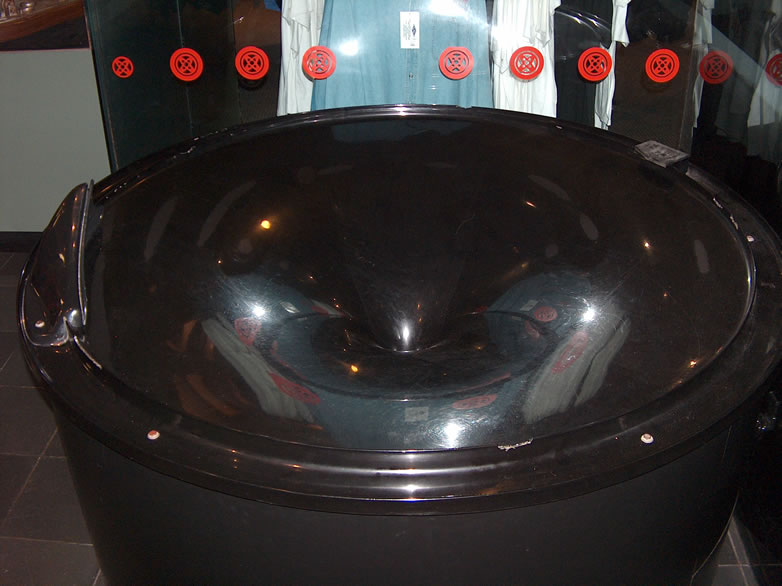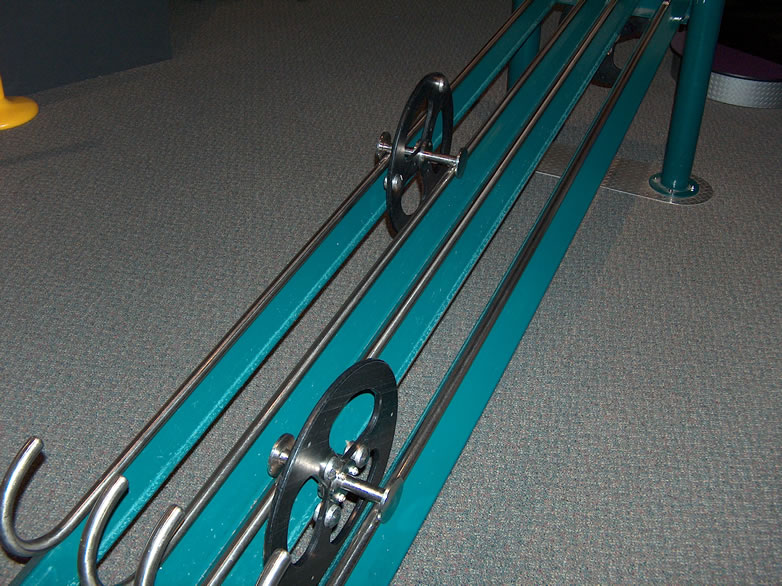
Petersen Automotive Museum | ||
| Author(s): Jim Schwagle |
Field Trip - Teacher's Guide SED 695B; Fall 2005 | |
 | ||
|
Topics addressed
|
Description of Field Trip The Petersen Auto Museum is a museum dedicated to automobiles, automotive technology and the history of automobiles with an emphasis on its place in Los Angeles. The museum has three floors, two dedicated to automotive displays and a third housing the May Family Discovery Center. The Discovery Center houses many interactive displays allowing students to learn more of the technology and physics behind the automobile. If technology or science is the purpose of the visit, the museum can provide an overview of autos before the students go to the May Center. Here, hands on activities allow the student to learn about Energy, Momentum, Machines, Pollution and other technologies and scientific principles that underly the automobile. |
|
Standards H.S. Physics 2. The laws of conservation of energy and momentum provide a way to predict and describe the movement of objects. As a basis for understanding this concept:
3. Energy cannot be created or destroyed, although in many processes energy is transferred
|
The Pinebox Derby track is a good illustration of Potential to Kinetic Energy changes. Children can build their own car at the May Discovery center and race them.
A display of child seats and their changes through time display attempts to protect not only children but adults in a crash. This is a good illustration of impulse to more advanced students.
A container showing the recycled parts of an auto make a good topic for discussion. |
|
Study Guide:
|
|
Questions:
|
 |
The May Discovery Center contains many hands on activities to illustrate scientific principles behind automotive technology. | ||
 |
A display of fuels and alternative fuels shows the benefits and drawbacks of each as well as illustrating how energy transfers are made possible through fuels. | ||
|
Place additional photos here  |
A parabolically shaped surface is used to "donate" coins to the museum. Patrons place a coin on a small ramp and it circles the surface for long periods of time before finally falling through the hole in the center. Possible learning uses, gravity rubber sheets, math examples, friction, etc. | ||
 |
Students can see how a transmission works, illustrating the transfer of motion and energy through it. | ||
 |
A "racetrack"down which two wheels of identical mass and dimensions travel. The wheel with the mass more closely placed toward the center wins every time showing that in circular motion, total mass has no effect, it is its placement with regards to the axis of rotation, moment of inertia, that determines the acceleration of the wheel. | ||
|
References & Links: | |||